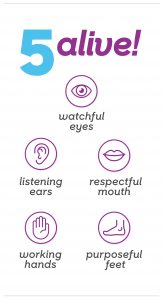Every school year with each new class of students, it’s important to set expectations early. Children thrive when they’re given structure. Once they get used to a routine and the clear expectations you’ve set for your classroom, they’ll actually begin to enjoy it. Three behavioral expectations you can set in your classroom from the start are when students should be seated, how to show respect to their classmates and teachers, and how to be attentive. Read on for a few tips on how to implement these guidelines and what the benefits will look like.
1. When to Sit And When to Be Relaxed
As soon as you can, clarify the rules of the classroom when it comes to being seated. For instance, students may leave their seats without asking when they need a tissue, have to go to the restroom, feel ill, etc. But they may not leave their seat during a lesson for any other reason.
Benefit
Students will very clearly understand that you take your teaching time seriously, and so should they. The learning environment is protected, and no unneeded interruptions should occur.
The Reward for Successfully Meeting Expectations
Give students time when they can be “lazy” in their chairs. Allow them to lean back, put their feet up, or slouch until you give them the signal to correct their posture. I loved to do this when I had the class practice concepts, charts, tables, and language rules by rows. If everyone in that row stood together and participated well, the entire row got to be “lazy” while the rest of the rows were practicing. This was a highly sought-after reward for active participation. Try it. It really works.
2. Respect for Teachers and Classmates
Respect is a two-way street, and children learn that by observing your behavior. Respect in the form of tone, body language, a non-argumentative spirit, and eye contact is equally as important as the words we speak. Respect for others’ belongings and classroom equipment is important to teach as well.
Benefit
Obedience and respect for your authority leads to respecting God’s authority.
The Reward for Successfully Meeting Expectations
Develop a kindness box. Together, come up with a clever name for it. When a student notices respectful behavior – whether it’s a teacher’s or classmate’s – he or she may write it down and drop it in the box. Periodically read these aloud, or handle privately for older students by finding a moment to say thank you to them.
3. Attentiveness Is a Must
Encourage your students to be caught being “five-alive” (see below). If I saw a student kicking the chair of another, all I said was “4-alive, 4-alive, 4-alive” in a fast singsong way. There’s no need to call them out directly and cause embarrassment – they know if they’re doing something wrong. If they corrected it, no consequences ensued. If he stopped but then immediately returned to the act of disobedience, a consequence followed. The result is that students view me as one who is trying to help them do right and not out to get them in “trouble.”

Benefit
The strategy keeps the room positive. And consequences do not carry over day today. Saying “Yesterday was a terrible day for you. Let’s hope you make it better today,” just sets the student up for failure. Why not say, “Hey, did you know I prayed for you today?” “Do you know I’m glad you’re in my class?”
The Reward for Successfully Meeting Expectations
To be “five-alive” keeps my class attentive, thus pleasing the Lord by their attentive obedience. The concept stems from Bible lessons about practical ways of growing spiritually. Emphasize to your students that attention and obedience in the classroom are ultimately obedience to the Lord. And they should feel great about that achievement every day.




Comments for 3 Successful Classroom Behavioral Expectations
Add A Comment
Your email address will not be published. Required fields are marked *